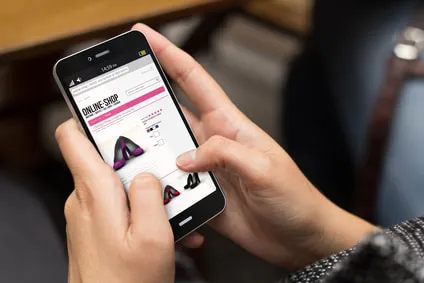eCommerce is a trend that isn’t likely to slow down any time soon, as more consumers flock to online stores for everything from basic necessities to luxury purchases. A site set up for eCommerce lets you sell to a broader audience than you could in a retail store. You can take advantage of online advertising to gain new customers and promote sales or offer exclusive coupons. You may also benefit from lower startup costs and expenses over time compared to operating a brick-and-mortar store.
But how can you design your eCommerce site to sell your products effectively? The eCommerce website design tips below will help you design an online storefront that turns visitors into paying customers.
eCommerce Website Design Tips

eCommerce sites can be some of the trickiest to design because there are so many moving parts that end up creating the final look. From product pages to navigation menus, you want everything to be simple but eye-catching. Here are some top tips to help you achieve the right design:
1. Highlight Your Branding
Think about the websites you’re likely to buy from:
- Are they scattered, elementary in design, with no clear branding throughout the website, or
- Do they have a clear theme on each page, product descriptions and photos that showcase the brand’s personality, and precise messaging that makes it clear what they sell?
Chances are, you’d be more likely to make a purchase from a clean website that’s easy to navigate and provides straightforward information about the products they’re selling. Branding is everything for an eCommerce site. From the moment your visitors land on your page, they should understand what you do and get a glimpse of your brand’s personality. Your personality also should be evident on every page they click through.
2. Design with Colors in Mind

It’s wise to choose colors for your site that not only represent your brand but also cater to the mood of your company and audience. Colors have the power to spark emotions and specific feelings toward your products or brand.
For instance, a company selling high-end spa and bath products might call for a minimalist design that uses a lot of white space for a crisp, clean feeling, just like you want to feel when you’re ready for a spa experience. Weaving in hints of purple – a color associated with luxury – might boost its appeal further to a high-end audience.
3. Keep It Very Simple
Simplicity makes for a cleaner, more user-friendly site that encourages people to purchase. The less you add to your website, in most cases, the better it is for your audience. They won’t get distracted by advertisements, slow or laggy pages, and hundreds of links to click through to find what they’re looking for.
Another advantage of a simple design is that it gives your audience fewer choices. When you want to point them to your products to purchase, less choice is better. Think about how you can streamline your menu options and product pages to keep your site free of clutter, excessive choices, and distractions.
4. Simplify Your Menu, Too
Speaking of menu options, let’s dig a little deeper there. Some sites you visit have multiple product categories – sometimes, dozens, or even hundreds – which might seem like a good idea because that means you have more to offer customers, right?
Wrong.
More categories can overwhelm visitors. According to a Clutch survey, 94% of consumers want simple navigation on websites. Give them a few options, and they’ll know what to do from there. You can always highlight three or four primary categories on the main menu. Then, break them down further when a shopper hovers over each one, but be sure to have a landing page for each primary category if they choose to click there instead of on a sub-category.
5. Make Room for Product and Lifestyle Photos

Strike a cohesive look between your product photos and other photography you use throughout your site, like those on the homepage. Your product photos also should be clear and large – at least, large enough that consumers won’t have trouble seeing your product in detail.
It’s worth it to invest in professional photographs for your site if you’re not skilled with a camera. Product photos, when done correctly, augment your product descriptions to help you sell more items.
Consider snapping photos at different angles and of products in action, if possible. The more detail your customers see, the better. After all, Weebly found that about 22% of returns for items purchased online happened because customers didn’t think the actual product looked like the product they fell in love with in its photos.
6. Make Your Pages Easy to Scan
Similar to a blog post, your website should be scannable. Your design should avoid large walls of text, and instead focus on graphics and photos that lead customers to different areas of your site.
Focus on smaller blurbs for your “About” section and the homepage rather than lots of words. On product pages, feel free to write compelling descriptions for items, but add features as bullet points rather than lengthy paragraphs of copy.
7. Include Testimonials and Reviews
Customer testimonials and reviews are everything for an online business! Remember: Customers don’t get one-on-one interaction with you like they would at a corner shop in town. They need to know you exist and that you’re worth buying from. Your social proof boosts that trust factor.
Many eCommerce themes have customizable testimonial sections built in for you to add a dedicated section to your homepage. You can also add product-specific reviews to the bottom of your product pages.
Design Your Website to Sell!
One of the best things you can do for your eCommerce site is to add share buttons on your product pages, blog posts, and other pages. With share buttons, your customers can share the products they love with their friends, family, and followers. It’s like free advertising! You can also install our image share buttons to allow customers to share your best product photos, along with a link back to the product’s page on your website, so you can attract visitors and make more sales effortlessly!




